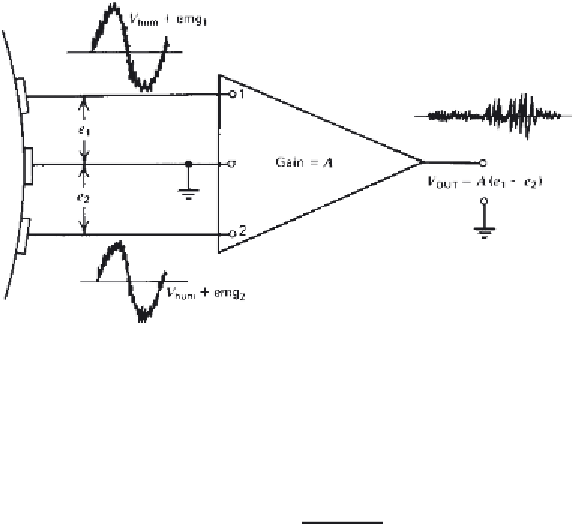Biomedical Engineering Reference
In-Depth Information
Figure 10.10
Biological amplifier showing how the differential amplifier rejects the
common (hum) signal by subtracting the hum signal that is present at an equal amplitude
at each active terminal. Different EMG signals are present at each electrode; thus, the
subtraction does not result in a cancellation.
be rejected. Thus, the hum at the output is given by:
A
V
hum
CMRR
×
V
o
(
hum
)
=
(10.5)
Example 10.1.
Consider the EMG on the skin to be 2 mV in the presence
of hum of 500 mV. CMRR is 10,000:1 and the gain is 2000. Calculate the
output EMG and hum.
e
o
=
A(
emg
1
−
emg
2
)
=
2000
×
2MV
=
4V
output hum
=
2000
×
500 mV
÷
10,000
=
100 mV
Hum is always present to some extent unless the EMG is being recorded
with battery-powered equipment not in the presence of domestic power. Its
magnitude can be seen in the baseline when no EMG is present. Figure 10.11
shows two EMG records, the first with hum quite evident, the latter with
negligible hum.
CMRR is often expressed as a logarithmic ratio rather than a linear ratio.
The units of this ratio are decibels,
CMRR
(
dB
)
=
20 log
10
CMRR
(
linear
)
(10.6)
If
CMRR
=
10, 000 : 1,
then
CMRR
(
dB
)
=
20 log
10
10,000
=
80 dB.
In
good-quality biological amplifiers, CMRR should be 80 dB or higher.










Search WWH ::

Custom Search